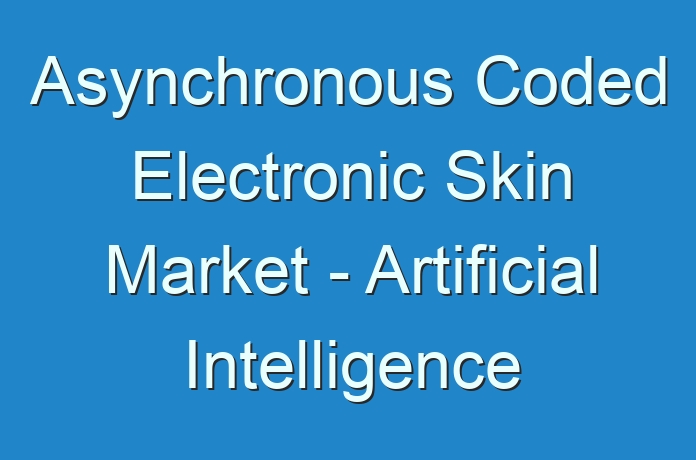
- Asynchronous coded electronic skin consists of touch sensors which are equivalent to human skin. It works as an artificial nervous system for robots. Asynchronous coded electronic skin is developed by the National University of Singapore and has gained a good response. The skin can be connected to any sort of sensor skin layer to work efficiently.
- Further, the artificial skin can sense more than 1,000 touches and is faster than the human nervous system. It has capacity to separate physical contacts among different sensors in less than 60 ns. Asynchronous coded electronic skin can recognize the texture, size, shape, as well as rigidity of objects.
- The characteristics of asynchronous coded electronic skin has increased its applications such as AI in robots, HMIs, and prosthetic devices. This can help to build more robots and perform recovery tasks.
Features of asynchronous coded electronic skin driving market growth
- Asynchronous coded electronic skin has features such as high fidelity and capture speed. The high capture speed helps to detect shape, texture, and hardness in 10 milliseconds. Also, in the asynchronous coded electronic skin, all the sensors are connected to a common electrical conductor.
Read Our Latest News Release:
- Another feature includes easy scale up due to a simple wiring system and high responsiveness of asynchronous coded electronic skin even with increasing number of sensors. This facilitates the scale up of electronic skin for applications in robots, prosthetics, and other human machine interface. These features are fueling the growth of the asynchronous coded electronic skin market.
Maximum Growth to be observed in the Asia Pacific Market
- In terms of region, the global asynchronous coded electronic skin market can be divided into North America, Europe, Asia Pacific, South America, and Middle East & Africa.
- The asynchronous coded electronic skin market in Asia Pacific is anticipated to expand at the maximum CAGR during the forecast period.
- This growth is attributed to a wide range of applications, features of asynchronous coded electronic skin, growing technological advancements, and increasing adoption of artificial intelligence. Thus, these factors are expected to increase the demand for asynchronous coded electronic skin products in the region.
- The asynchronous coded electronic skin market in North America and Europe is expected to show high growth rate due to increasing competition among players. The market in Middle East & Africa is likely to show slow growth due to lack of manufacturers and low investment in product development.





